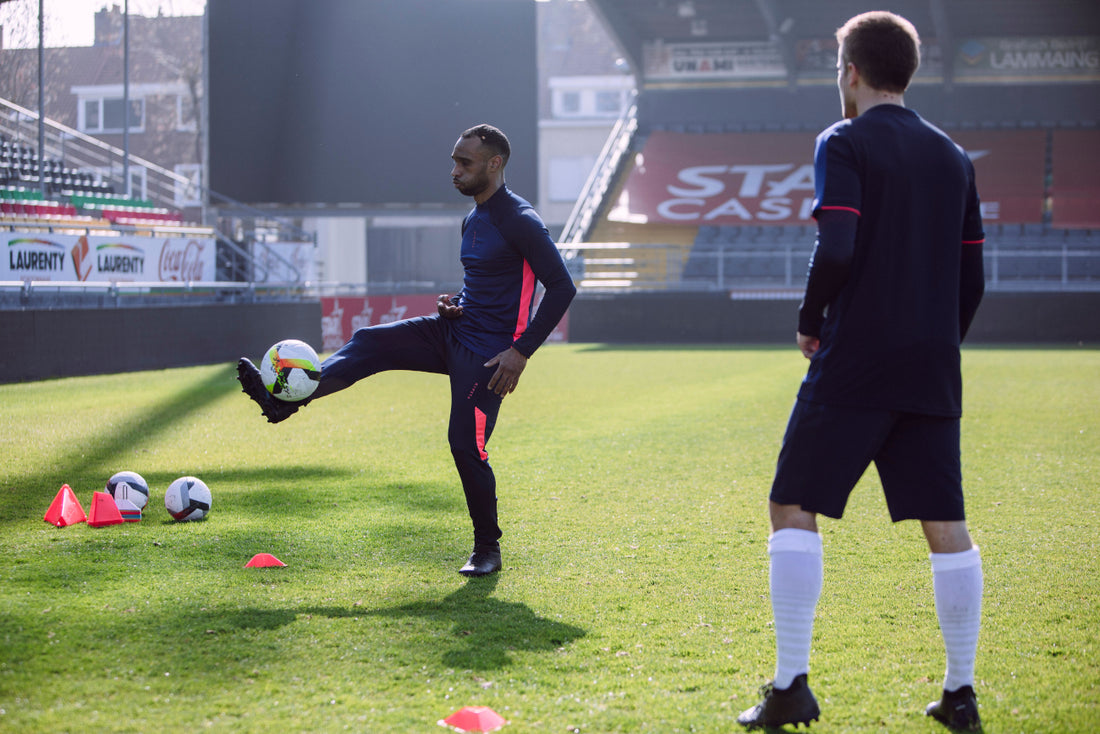The arc in front of the penalty box
Did you know that the referee will ask players to stay outside of the arc when a penalty is being shot? This way, they are a good 30ft meters away from the ball. And yes, that's the purpose of the arc!
6-meter line and red cards
The six-meter line, used by the goalkeeper to restart the game, is actually 18ft from the goal. So why is it called the "six-meter line”? Simply because this line is actually situated 6 yards from the goal line. Another point to mention about this 5.5 meter zone, also called the "goal area": according to Law 13, a free kick is taken from the spot of the foul, except if the free kick is awarded to the defending team in their own goal area. It can then be "taken from anywhere in that area”.
It would be hard to imagine football officials and referees without their red cards. But this rule isn't actually that old! It was only introduced in 1970, during the World Cup in Mexico. A big shout-out to Evgeni Lovchev who made his mark in history as the first football player to receive a red card and was sent off the field during a Mexico-USSR match.
Why do we say "penalty box”? When a foul is committed close to the goal, it is unfair to the attacking team who, in most cases, was in a good position to score. Therefore the referee will award a "penalty" for any foul committed in the rectangular area near the goals.
Free kicks and throw-ins
Did you know that it's impossible to score a goal against your own team on a direct free kick? A player that shoots a free kick into their own net gives their opponent a corner kick. Similarly, it's against the rules to score on a throw-in. If you score during a restart, your opponent will be awarded a free kick.
Offsides
To avoid being offside, you need to have 2 opposing players between the player receiving the ball and the opponent's goal line. So if the goalkeeper isn't in front of the goal, there has to be two defenders covering the attacking player. Therefore, Sakai's goal against Leipzig in the quarter final of the 2018 Europa League shouldn't have counted: there's only one defender between him and the goal. But that would have deprived us of a very incredible moment in football and a celebration in the Vélodrome, so it's not all bad!
Coin toss and streakers
We all know this one, the captain that wins the coin toss at the beginning of the match chooses which goal it will attack. But for a long time, the winner only chose its side while the losing team automatically started the match. If a person unassociated with the defending team prevents a goal by entering the field, the referee will put the ball into play with a ball on the ground for the attacking team. However, if the person that prevented the goal belongs to the club (a replacement who is warming up or a physical trainer for example), a penalty will be awarded.
Field dimensions
The dimensions of a football field vary from one stadium to the next. The sidelines should be between 90 and 120 meters and the goal lines should be between 45 and 90 meters. This explains why some fields are wider than others, even though the dimensions have become more standardized over the last 20 years. Camp Nou is often cited as an example to demonstrate the different dimensions among fields. But in reality, the Camp Nou field is no larger than the Parc de Princes field! It measures 105 meters long by 68 meters wide since the renovation work completed in 1998 (before that, its dimensions were 110 meters by 72 meters).
Wondering what the distance is between the posts? The distance between the two posts is 24 feet. The penalty spot is 11 yards from the goal line but is equidistant from each post.
















